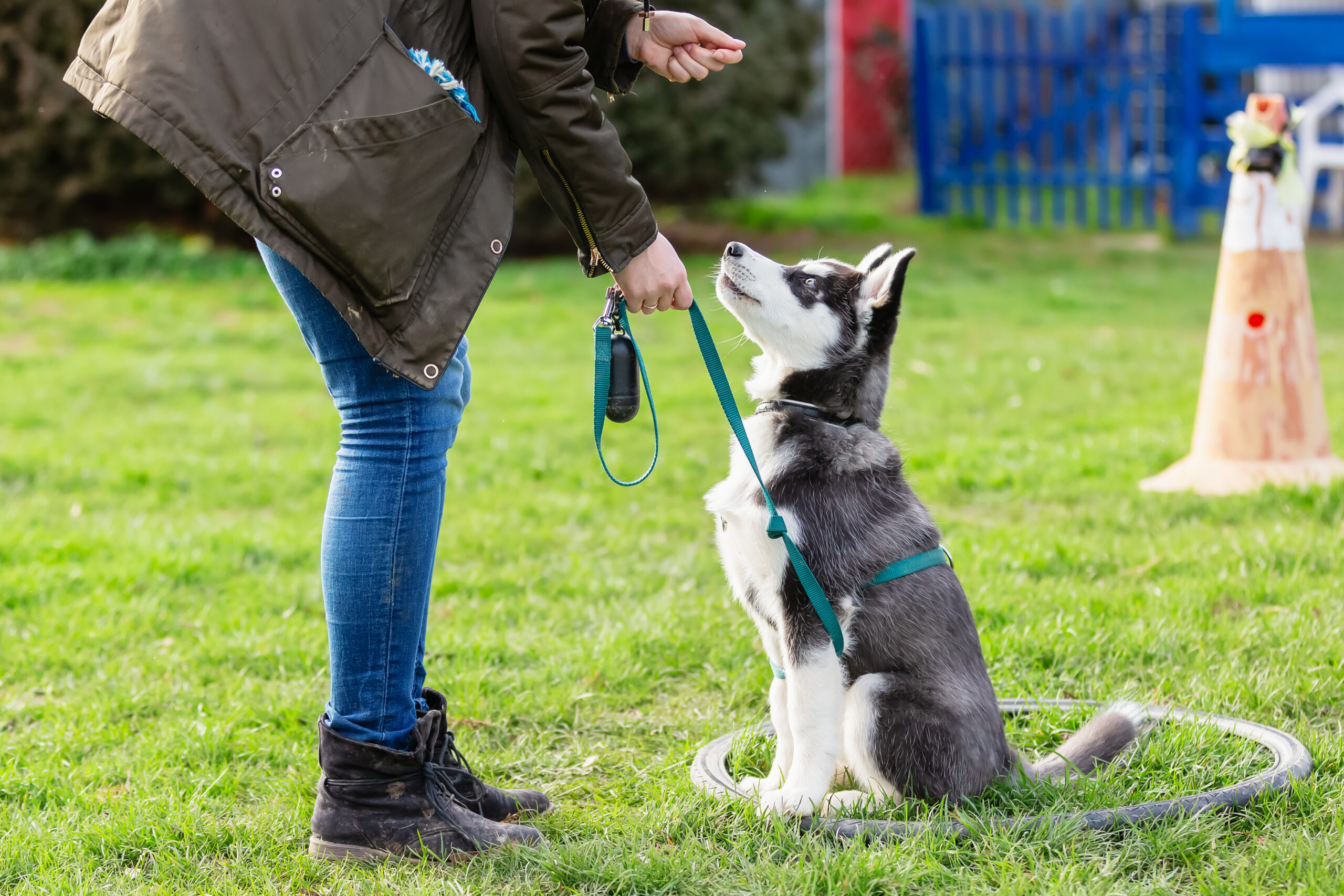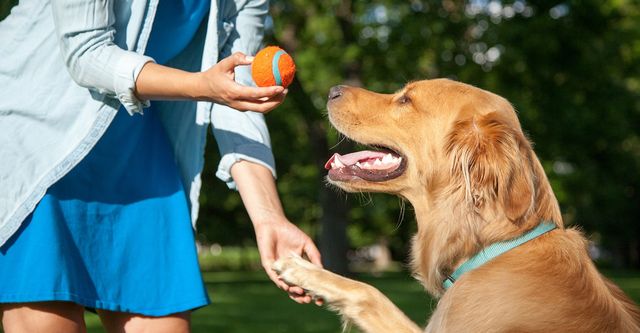How Dog Training Near Me Improves Trust and Communication
Wiki Article
Efficient Strategies for Successful Pet Dog Training: A Comprehensive Guide
Reliable pet training needs a nuanced understanding of canine habits. It hinges on the concepts of positive reinforcement and consistency. Trainers have to identify the value of essential commands and socializing. Resolving common behavior issues can transform a pet's disposition. As the bond between proprietor and dog reinforces, the means they communicate progresses. The journey of effective training includes numerous approaches that might amaze also seasoned animal owners. What are the crucial components that can make a substantial difference?Recognizing Canine Habits
Comprehending canine habits is important for effective pet training, as it allows instructors to interpret a pet's actions and reactions in various circumstances. Pet dogs interact primarily with body movement, articulations, and faces. Identifying indications of hostility, concern, or anxiety can aid fitness instructors change their approaches to guarantee a favorable training experience. A wagging tail does not constantly show happiness; the context and various other body hints must be considered.Additionally, comprehending a canine's breed-specific traits can use understandings into their habits patterns and instincts. Socialization plays a crucial duty in forming a dog's responses to new people and atmospheres. Observing a pet's play design can additionally reveal their personality and comfort levels. By meticulously reviewing these behaviors, fitness instructors can create tailored strategies that foster discovering and enhance the bond between pet and owner, eventually causing even more effective training end results.
The Relevance of Favorable Reinforcement
Favorable reinforcement is a crucial method in canine training that enhances the finding out process by satisfying desired habits. This approach encourages dogs to duplicate activities that yield favorable outcomes, such as treats, appreciation, or playtime (Dog Training Near Me). By connecting etiquette with benefits, canines become a lot more determined and engaged throughout training sessions
Incorporating favorable support into training routines can result in quicker understanding and far better retention of commands. It advertises a cheerful ambience that enhances both the pet dog's experience and the fitness instructor's complete satisfaction, making it an essential facet of effective pet training.
Necessary Commands Every Pet Need To Know

Creating a Constant Training Schedule
Developing a constant training routine is essential for effective pet dog training, as it helps strengthen understanding and creates a sense of regular for the pet. A structured technique permits both the fitness instructor and the pet dog to prepare for training sessions, which can enhance emphasis and involvement. Preferably, training sessions should be short, lasting between 5 to 15 mins, to keep the canine's interest and excitement.Including training right into daily tasks, such as nourishment or walks, can also advertise consistency. This integration helps canines link training with favorable experiences. It is necessary for instructors to continue to be adaptable; unexpected occasions might require modifications to the timetable.
Furthermore, repeating is key. Regular method of commands and habits strengthens knowing and builds confidence. By adhering to a consistent timetable, fitness instructors can guarantee that their dogs establish excellent routines and react reliably to commands, laying the foundation for effective training end results.
Socialization: Secret to a Well-Adjusted Dog
Socializing is essential for a pet's development, affecting their habits and interactions with individuals and other animals. Early direct exposure to different environments, sounds, and experiences can significantly improve a pet dog's adaptability and self-confidence. Utilizing reliable socialization techniques can aid guarantee a well-adjusted canine friend.Importance of Very Early Socializing

Methods for Efficient Socializing
While lots of dog owners identify the relevance of socializing, understanding effective techniques to facilitate this process is crucial for promoting a well-adjusted pet dog. Steady direct exposure to varied atmospheres, people, and various other animals can significantly boost a pet dog's comfort level in various scenarios. Positive support plays an essential duty; fulfilling desired behaviors encourages dogs to come close to brand-new experiences with self-confidence. Structured playdates with courteous pets assist develop social skills and reduce anxiety feedbacks. Enrolling in obedience classes can additionally give controlled atmospheres for socialization. Ultimately, keeping a tranquil disposition as an owner reinforces the pet dog's complacency, permitting even more effective interactions. These techniques jointly add to a balanced and adaptable canine friend.Managing Common Behavioral Issues
Taking care of typical behavior concerns is important for preserving a harmonious partnership in between canines and their owners. Key obstacles such as aggressiveness, excessive barking, and leaping actions call for targeted techniques to take care of properly. Recognizing the origin triggers of these behaviors can bring about effective Source treatments and a more well balanced canine companion.
Attending To Aggressiveness Issues
Hostility in pet dogs can show up in different kinds, posing difficulties for owners and instructors alike. Dealing with these concerns demands a comprehensive understanding of the underlying causes, which may consist of resource, territoriality, or fear safeguarding. Determining triggers is important; owners should observe their dog's body movement and habits to identify particular situations that provoke aggressiveness. Positive support techniques can effectively change hostile habits, fulfilling tranquil feedbacks to determined triggers. Uniformity is crucial, and owners have to continue to be client throughout the training process. In many cases, specialist support from a certified canine instructor or behaviorist may be needed, specifically for serious aggressiveness. Eventually, the objective is to produce a safe setting for both the canine and those around it.Handling Extreme Barking
Too much barking can be a substantial hassle for dog proprietors and next-door neighbors alike, usually signaling underlying issues that need attending to. Determining the triggers behind the barking is essential; these may include monotony, anxiety, or a feedback to external stimuli. Proprietors need to observe their pet's habits and atmosphere to determine the reason. Dog Training Near Me. Applying consistent training methods, such as favorable support, can efficiently reduce barking. Showing commands like "silent" or redirecting the dog's interest at the moment of barking can be valuable. Furthermore, supplying appropriate physical and mental excitement with workouts and interactive toys can reduce boredom-related barking. In some situations, speaking with a professional trainer or behaviorist might be needed to create customized techniques that attend to relentless barking problemsMinimizing Jumping Habits
Many pets show leaping habits, commonly as a way of expressing excitement or seeking interest from their site visitors and proprietors. This actions can be troublesome, specifically when it brings about unintentional injuries or pain for guests. To minimize jumping, proprietors must initially remain tranquil and stay clear of rewarding the habits with focus, as this can enhance it. Rather, they can show an alternate actions, such as resting, by awarding the pet for continuing to be calm when someone strategies. Consistency is crucial; all member of the family must impose the very same policies. Additionally, training sessions must include interruptions to help the canine find out to control their impulses. With time, with persistence and persistence, leaping can be considerably minimized, bring about an extra pleasurable environment.Building a Solid Bond With Training
Educating a canine frequently concentrates on commands and habits, it additionally offers as a vital possibility to strengthen the bond between the canine and its owner. Taking part in training sessions cultivates communication, good understanding, and depend on. When proprietors invest time in teaching their pet dogs, they demonstrate commitment, which assists the dog feel protected and valued. Favorable reinforcement methods, such as deals with and praise, not only encourage preferred actions but likewise reinforce the psychological connection in between the dog and owner.Consistency in training builds a sense of integrity, enabling pet dogs to comprehend their function within the home. Each successful command boosts the canine's confidence, causing a much deeper partnership. Regular training sessions can become pleasurable bonding experiences, full of playfulness and interaction - Dog Training Near Me. Eventually, the Check Out Your URL procedure of training goes beyond simple obedience, creating a collaboration that improves the lives of both the pet and its proprietor
Regularly Asked Inquiries
What Age Is Ideal to Beginning Educating a Young Puppy?
The very best age to begin educating a pup is typically between 8 to 12 weeks. At this stage, puppies are most responsive to learning, making it an ideal time for foundational training and socializing.
Exactly how Lengthy Should Each Training Session Last?
The optimal duration for each and informative post every dog training session typically varies from 5 to 15 mins, relying on the canine's age and interest period. Short, concentrated sessions improve discovering and retention, making training much more enjoyable and reliable.Can Older Pet Dogs Still Be Trained Effectively?
Older canines can indeed be trained successfully. With perseverance and constant methods, they can discover new commands and habits. Their experience typically makes them more receptive to training, boosting the bond in between pet dog and owner.What Equipment Do I Required for Training?
For effective dog training, essential devices includes a sturdy chain, a comfortable harness, high-value deals with, training clickers, and a variety of playthings. These tools promote communication and enhance favorable behaviors throughout training sessions.How Do I Track My Pet dog's Training Development?
To track a dog's training development, one can keep a journal, record milestones, and note behavioral adjustments. Regular assessments, consisting of timed commands and obedience tests, help gauge renovation and identify areas requiring more attention.Recognizing canine behavior is important for effective pet training, as it enables instructors to interpret a pet dog's actions and reactions in numerous scenarios. Establishing a constant training routine is important for reliable canine training, as it assists enhance learning and produces a feeling of regular for the dog. Educating a pet often concentrates on commands and behaviors, it additionally serves as an essential opportunity to enhance the bond in between the pet and its proprietor. When proprietors spend time in teaching their dogs, they demonstrate dedication, which aids the dog really feel secure and valued. The suitable period for each dog training session normally varies from 5 to 15 minutes, depending on the pet dog's age and interest span.
Report this wiki page